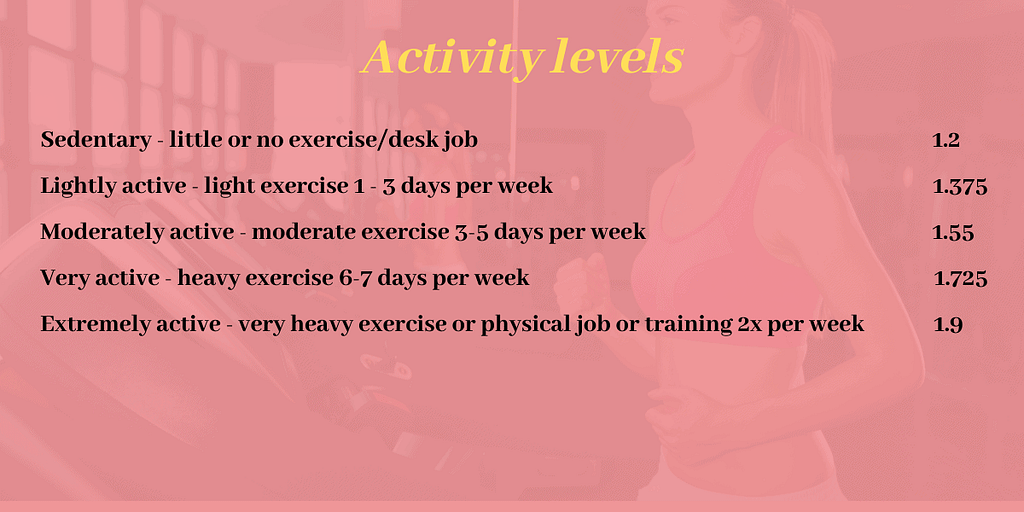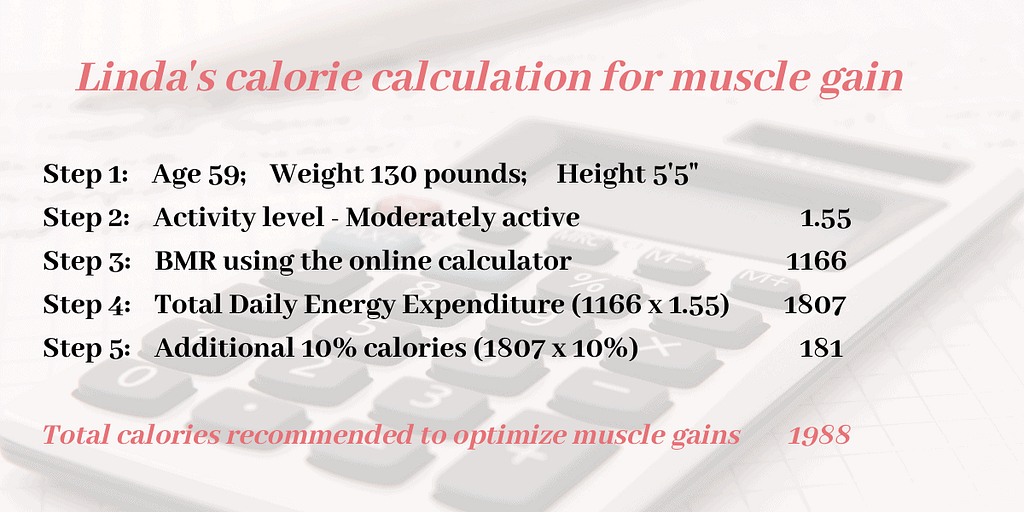Eating to build muscle is different from eating to lose body fat. Muscle requires nutrients to repair and get stronger after challenging workouts.
As a woman, it is likely that you think of food in terms of how it relates to your ability to lose or maintain your weight. Eating the right calories to gain muscle often requires a mind shift.

First, forget about the fad diets that restrict calories. Muscles need a balance of protein, carbs and fats. Healthy carbs give your body the energy it needs for your strength training sessions. Healthy fats deliver nutrients and amino acids throughout your body and to your muscles. Protein contains amino acids that help repair and build muscle.
New here? Thanks for stopping by or welcome back. After you read this blog, be sure to check out some of my other articles for women over 50 who want to lose body fat, build muscle, create phenomenal bodies they love.
Step 1: Understand the criteria used to calculate calories to gain muscle
The number of calories your body needs depends on your:
- Goal, which in this case is to build muscle
- Current weight & height
- Age
- Activity level
While you have the first three at your fingertips, your activity level may require a bit of explanation.
Step 1: Sample calculation: Linda's calories to gain muscle
As I share each step in determining the calories needed to gain muscle, I’ll use the Linda as an example. Linda is 59 years old, weighs 130 pounds and is 5’5″ tall. Linda is following a strength training program 5 times per week. Her goal is to build more muscle.
Step 2: Assess your activity level
Your activity level is assigned a numerical value based on the intensity and frequency of your exercise routine.

Step 2: Sample calculation: Linda calories to gain muscle
Since Linda is following a strength training program 5 times per week, her activity level is rated at Moderately active with a numerical value of 1.55.
Step 3 : Calculate Basal Metabolic Rate (BMR)
Your Basal Metabolic Rate (BMR) is the rate your body burns calories when you’re at rest and this is the starting point in determining overall calorie needs.
While there are numerous formulas to calculate BMR, I recommend using this online calculator. It’s quick and easy and as accurate as any formulas you could calculate yourself.
Step 3: Sample calculation: Linda's calories to gain muscle
Using the online calculator, Linda’s BMR is 1166.
4. Calculate Total Daily Energy Expenditure (TDEE)
Total Daily Energy Expenditure includes the number of calories you burn at rest and during exercise.
To calculate TDEE, multiply your BMR, the calories you burn during rest (step 3) by your activity level (step 2).
The online calculator will also give you your TDEE so no math needed.
TDEE represents the total calories you need to maintain your current body weight.
Step 4: Sample calculation: Linda's calories to gain muscle
To calculate Linda’s Total Daily Energy Expenditure, we’ll take her BMR (1166) times her activity level of 1.55. Based on this calculation, Linda needs 1807 calories to maintain her current weight.
5. Calculate additional calories needed to gain muscle
In order to gain muscle, you need to eat more calories. I know that can sound scary. Maybe you’re even thinking “I don’t want to gain fat!”
Start by increasing calories slowly. A good rule of thumb to use is “10% more calories” or somewhere around 200 – 250 calories.
And, eating more calories does NOT mean you should eat anything you want. This isn’t the time to start loading up on junk food etc.
Step 5: Sample calculation: Linda's calories to gain muscle
Since Linda needs 1807 calories in order to maintain her current weight, an additional 10% (1807 x 10%) or 181 calories would be added to her daily calorie intake to enable her to build muscle. Linda plans to eat approximately 1988 calories.
Here’s a quick summary of Linda’s calorie calculation so that she can optimize her muscle gains.

Pin it now. Read it later.

